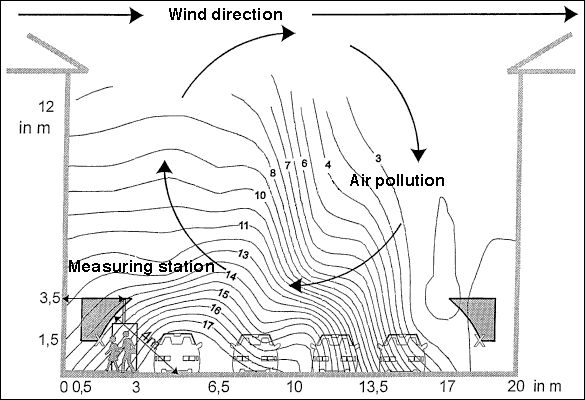Use of the model
The results of existing street measurements show that the concentration levels set forth in Directive 2008/50/EC and the 39th BImSchV were exceeded at a large number of primary roads – continually, in the case of nitrogen dioxide. Since a measurement-based survey is not possible on all streets of the city, for cost reasons, the pollution immission for the complete primary road network in Berlin was estimated using emission and dispersion calculations. Under this process, those streets are ascertained where the legal limit values are almost certain to be exceeded, or where they will be met.
To achieve this, these measurements are supplemented with model calculations in all traffic-filled streets in which limits are potentially exceeded. However, even in a traffic-filled urban canyon, the background pollution produced by other sources in the city, and introduced by the long distance transportation of pollution, is an important factor. Therefore, to plan the improvement of air quality in Berlin, a system of models is applied that can calculate both the wide-ranging influence of distant sources and the contribution of all emitters in the city, even in traffic-filled urban canyon. For such an estimation of all primary roads (“screening”), the modular program system IMMIS▪▪▪ developed for this purpose is suitable.
IMMIS-Luft▪▪▪ (air) is a screening program system for the evaluation of pollution caused by road traffic. It was developed specifically for application in the context of traffic-related assessments. Provided the necessary input data is known, a rapid calculation of pollution immissions is possible with the aid of this program, both for individual streets and for comprehensive road networks.
In this process, the pollution immission is calculated on both sides of the street for one point on each side, at an elevation of 1.5 m, and at a distance of 0.5 m from the edge of the building (cf. Figure 1). The mean of the calculated immission at these two points is considered the characteristic estimate of the immission pollution in this section.

